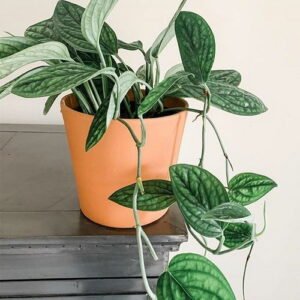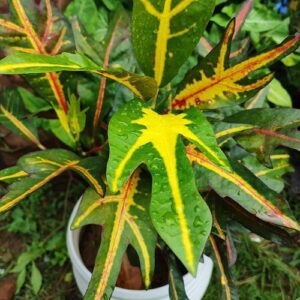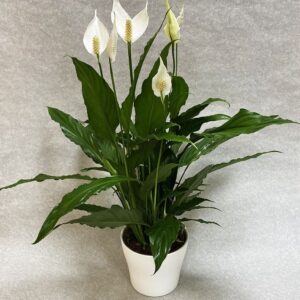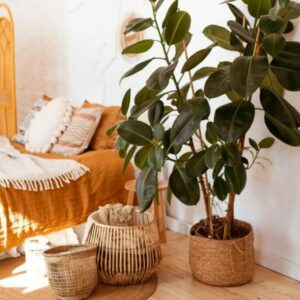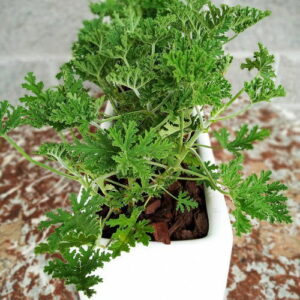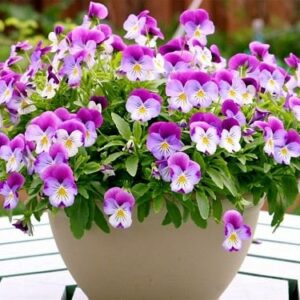The variety of Philodendron species, also known as tree friends, is huge. They climb, crawl, grow on the ground or in the treetops. Find out about the best types of Philodendron here.

But which of the many species should you choose? To make the choice a little easier, we have compiled the most popular types of Philodendron here as an overview for you.
Types of Philodendron: how many are there?
The approximately 487 species of Philodendron are indigenous to the tropical forests of South and Central America, where they grow partly on the ground and partly as sessile plants, called epiphytes, on trees. In addition, there are hemiepiphytes that begin their life high up in the treetops and then grow their roots towards the ground, where they make contact with the soil. To create suitable conditions also for houseplants, each one Philodendron species presented here mention whether it grows epiphytically or terrestrially.

Terrestrial and epiphytic species:
As mentioned, some Philodendron species grow on the ground in the soil of the tropical rain forest. Others cling to trunks of larger trees with their aerial roots; they are so-called epiphytes. Their elevated, often climbing growth provides more access to light, which is scarce in the dense rainforest. However, epiphytes are not parasites: Rather, they are content to use part of the tree’s dead, loose bark and coarse organic materials that collect in cracks in the bark as a substrate. Consequently, these are two types of Philodendron require different soils to come to life as houseplants in our country:
- For terrestrial growing philodendron species an “All Purpose” compost is a good choice. It has a loose structure, which it retains for a long time, and yet can retain water. It is also enriched with important nutrients. The soil should be permeable and slightly acidic, but also retain moisture well.
- For epiphytes and hemiepiphytes among the philodendrons, a mixture of universal soil, expanded clay and pine bark is suitable in the ratio 1:1:1. Expanded clay and pine bark provide additional aeration and a stable, slightly acidic pH.
All species generally do best in a warm, semi-shady location with indirect sunlight, temperatures around 25°C and high humidity. Philodendron species do not like temperatures below 15°C. Because they grow high in the treetops, epiphytes tolerate slightly more light than terrestrial species.
The most beautiful types of Philodendron at a glance
In addition to the popular cotyledon philodendron (Philodendron chandens), there are many other species that are suitable for keeping as houseplants. Of the many Philodendron varieties, some have differently colored or patterned leaves.
Philodendron gloriosum
Philodendron gloriosum, has large, heart-shaped leaves with veins that stand out brightly against the dark green background. It is a ground-growing, creeping plant. In accordance with its natural habitat, this species of Philodendron requires a semi-shady place in the room. The creeping shoots become an eye-catcher in any hanging pot. The rhizome should still partially protrude from the soil when planted.

Philodendron melanochrysum
This species has heart-shaped, but very elongated leaves of velvety dark green with pale yellow veins, which can grow up to 60 cm long under ideal conditions. Since the leaves look almost black, Philodendron melanochrysum also called Black Gold Philodendron. It is a hemiepiphytic, climbing species that can grow up, for example, moss sticks. At the same time, the leaves hang down vertically, typical of the species. Philodendron melanochrysum is very heat dependent and requires temperatures above 18 °C, especially in winter. Likewise, high humidity is necessary to keep the plant healthy.

Philodendron verrucosum
The Philodendron verrucosum grows as a hemiepiphyte on trees at first, but roots downwards into the soil over time. The species has velvety, dark green heart-shaped leaves with bright leaf veins. The long, creeping or climbing shoots can either be draped upwards on a climbing support or displayed hanging in a hanging pot. The petioles are covered with light green, protruding hairs. The basis for Philodendron verrucosum must first and foremost be permeable, but also provide a good water supply.
- Philodendron verrucosum “Red Back”: With dark red leaf underside.
- Philodendron verrucosum “Micro”: Small leaves up to 10 cm long.

Philodendron erubescens
The special thing about Philodendron erubescens is its red colored petiole. These are complemented by heart-shaped green leaves up to 40 cm in size. The species is also called blushing philodendron. Although the foliage is green, in its natural habitat the plant develops flowers enclosed in a red bract, the spatha. Sometimes young leaves that are just forming are also colored red initially. This climbing plant starts growing on the ground and climbs trees. Should it lose contact with the ground, it can live entirely as an epiphyte. In general, this species grows quite slowly.
- Philodendron erubescens “Pink Princess”: an unusual variety with pink variegated leaves.

Philodendron squamiferum
With this type of Philodendron, it is the leaf shape that makes it so special. The Philodendron squamiferum has deeply lobed leaves, resulting in four small lobes and a large central lobe. Its reddish, hairy shoots serve as an additional eye-catcher for this climber. This hemiepiphyte first grows in the tree canopy and then develops long roots that reach the ground.

Philodendron bipinnatifidum
Known to us as split-leaf philodendron (Philodendron bipinnatifidum), this variety grows neither as a creeper nor a climber, but upright on its own. With age, the lower leaves fall off, leaving a decorative stem with leaf scars. The tree philodendron is itself a tree and grows up to 2 m high as a houseplant. The leaves also become quite large, up to 1 m. They are arrow-shaped or incised, depending on age. This ground plant requires warm soil and average room temperature, ideally dropping to around 16 °C at night.

- Philodendron bipinnatifidum ‘Xanadu’: Horsty; about 130 cm long; lobed leaves about 40 cm long.
- Philodendron bipinnatifidum ‘Burgundy’: Leaves with reddish underside.
- Philodendron bipinnatifidum “Little Hope”: Smaller and more compact than the rest of the species.

Tip: The species and its varieties are still sometimes known by their old botanical name Philodendron selloumbut this is no longer relevant.
Philodendron sagittifolium
The Philodendron sagittifolium is quite variable in appearance – that is, its leaves can vary in appearance depending on the plant and its age. It often has leathery, dark green leaves that are deeply incised, giving it a distinctive willow shape. It grows as a hemiepiphyte partly in the treetops and partly on the ground. Maintaining high humidity and sufficient heat at 20 to 23 °C are important to keep this species as a houseplant. It should never be colder than 18 °C, even in winter.
The Monstera is a close relative of the philodendron with similar requirements, and is equally known to us as a window lover. Let us show you how to plant and care for yours Monstera in our article.
